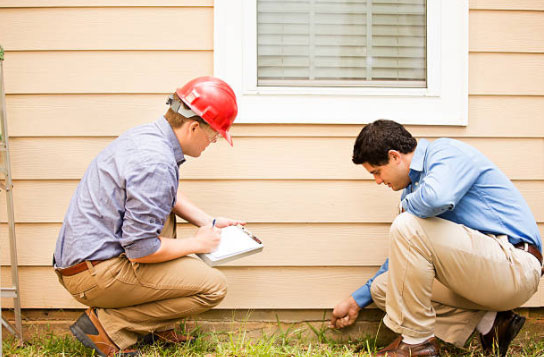FOUNDATION INFORMATION

A good foundation is critical to every structure. Not only does it support the building above it, but it also prevents a moisture dam against outside ground water, which prevents mold and mildew from growing in your basement.
Foundation problems may come from several causes.
All foundations settle over time. Even new homes can develop tiny vertical cracks in their foundations within the first two or three years. However, horizontal cracks due to sinking and settling can indicate larger problems. This may mean that an excessive amount of water pressure is impacting your foundation. When insects or water invade these cracks, they can weaken an already damaged foundation. A house can also settle so much that one side may appear to be lower than another. This too is a serious problem that requires a foundation to be lifted.
Some indications of foundation problems can manifest themselves in other parts of the house. Gaps around window frames or exterior doors, doors that stick or don’t open or close properly, and floors that are no longer level or sag can also be caused by issues with a foundation.
Of course, the most obvious indicator of a foundation problem is water entering a basement after it rains. If the problem isn’t due to a leak from a window or door, or poorly functioning gutters and downspouts, chances are great that your home’s foundation needs attention. Main Line Waterproofing offers free consultations where we will inspect and diagnose the issues that may be affecting your foundation, and present you with options to repair the problem.
Concrete protection
Hairline cracks in a basement floor are typically not cause for alarm. They are usually superficial, and the result of shrinkage after the concrete has dried. However, crack that are 1/8” or larger should be repaired. Perimeter cracks, which are caused when the concrete floor shrinks away from the foundation walls, also need repairing. While any of these cracks may not be indicative of a structural problem, they could be a way for water to enter your basement.
Both floors and cinderblock walls should be professionally filled and protected with a sealer that has an invisible finish, but guards against peeling and flaking. Don’t be fooled by claims of “waterproof paint”, as these surface coatings are not actually waterproof!
Stone foundation repair
Many older homes in our area were built with stone foundations, and over the decades of settling problems arose. In many cases the cement placed between the stones to form a barrier has disintegrated or fallen out. This allows water and pests to enter your basement, and weakens the foundation. One indication that your stone walls need attention is if there is sand dust at the base of the wall. The sand is usually an indicator of mortar joint erosion, which can reduce your house’s stability, increase your electricity and heating bills, and spoil the air quality of your home and allow critters to enter.
To repair interior and exterior stone walls that have been damaged over time a particular type of masonry needs to be used as mortar between the stone. Just patching these walls with Portland cement is likely to be a temporary fix, and won’t last very long, as soon the sand will again be appearing on your basement floors.
Often after a stone foundation is repaired, parging is applied. Parging is a technique used by masons to cover the surface of a masonry wall. It’s similar to stucco, utilizing a specialized mortar to cover exterior and interior masonry block and stone walls. A fresh coat of parging works to protect and shield your home’s foundation from all of nature’s elements.
Foundation coatings
If your basement leaks one of the most effective repairs is coating the exterior of your foundation. There are different methods that can be used to achieve this, but both methods require digging down to the bottom of the foundation against the exterior wall.
For smaller issues, existing cracks are repaired, and asphaltic material is sprayed on or applied with brush or roller.
Larger waterproofing jobs require more time and effort. The outside of the wall is covered with an impermeable coating that extends down to the drain. One method employs sheets fastened to the wall. Another method uses several layers of sprayed-on seamless material built up to the thickness specified by the manufacturer. Some of the spray-on treatments require a priming coat and then one or more final layers of a liquid-rubber, elastomeric coating built up to usually a minimum 60-mil thickness. These coatings dry in about 60 minutes to form a seamless barrier which is resistant to puncture.
Foundation deepening
Some homeowners may need to have their foundations lowered to allow for a basement that’s actually livable space. This process of basement lowering is described here.
Main Line Waterproofing can provide more information about your foundation and can make suggestions on how to correct the water problems you are having that are directly caused by issues with the foundation.
To discuss your foundation problem with us NOW, please call 610-642-4444 or request a FREE INSPECTION.
